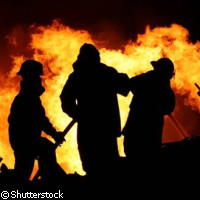Real time video to help fight forest fires
A new on-site video monitoring system has been designed to contain forest fires. Its inventors, scientists from the University of Seville and University of Pablo de Olavide in Spain, say the system could be used to study the spread of fires and determine such things as the position of a fire's front line and provide flame height estimates. In doing so, the system is expected to provide new techniques to fight fires. The scientists are currently looking at how their system could be adapted for use in unmanned airborne vehicles, as part of the EU-funded AWARE project. The Vision Computing System captures visual information in two ways: through images that are recorded using a conventional video camera, and through infrared images that are captured using more advanced cameras. Professor Luis Merino of the Polytechnic School of Pablo de Olavide, who developed the system, explains that the images are also 'taken from different viewpoints in order to increase error robustness'. The images captured by the cameras are processed on a computer, and then compared to data contained in the system. At that point, the software is capable of measuring the height and angle of incline of the flames at a fire's frontline, and then generating a 3D model of the fire. Many firefighters and ordinary citizens lost their lives during a spate of forest fires that hit Europe in 2007. The system could help prevent such fatalities in the future by providing the necessary information to better assess a situation and prevent the spread of fires. Fire-fighters 'can use it to obtain precise, real time information about fire patterns, a very important matter in relation to the safety of the reserve fire-fighting teams,' says Professor Merino. In order to benefit from the results, the cameras and the computers need to be moved to the site of a fire. However these sites are not always easily accessible. In response to this problem, the scientists are currently looking into techniques for applying the system to airborne vehicles, such as crewed helicopters and autonomous air robots. One such methodology has already been tested under controlled forest fire experiments in Portugal, in collaboration with the Association for the Development of Industrial Aerodynamics at the University of Coimbra. Furthermore, as part of the EU-funded AWARE project, researchers are currently looking at ways to adapt the system for remoted-controlled helicopters and other these unmanned airborne vehicles. Coordinated by the University of Seville's Association of Research and Industrial Co-operation of Andalucia, the aim of the AWARE project is to design, develop and test a platform for the cooperation between these vehicles. The platform will allow for specific tools to operate in sites, which are difficult to access and have no communication infrastructure.



